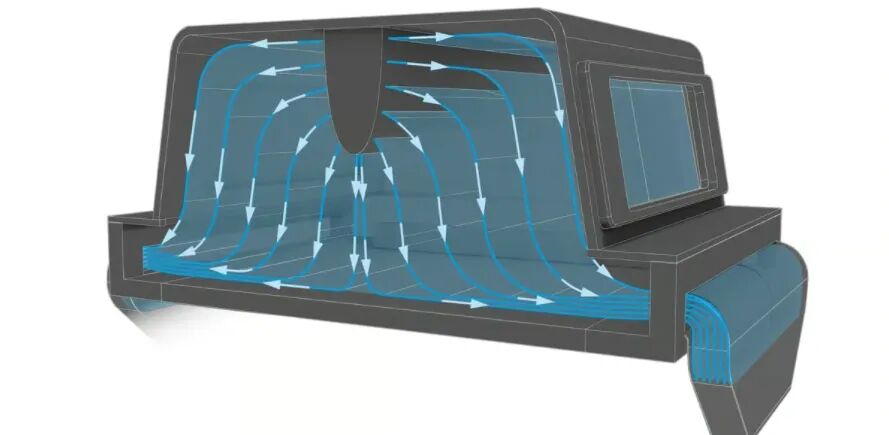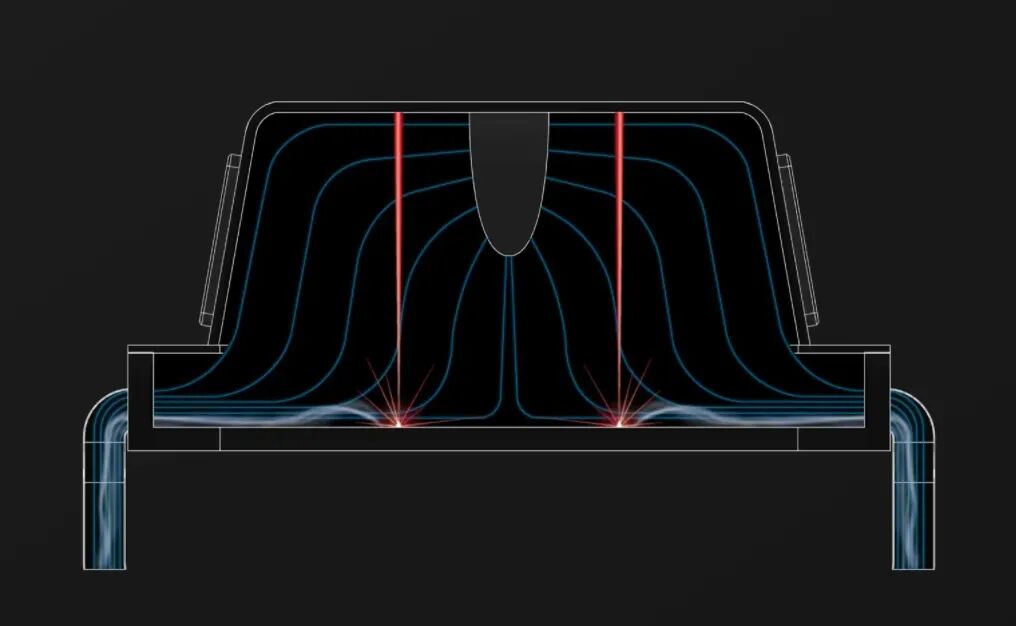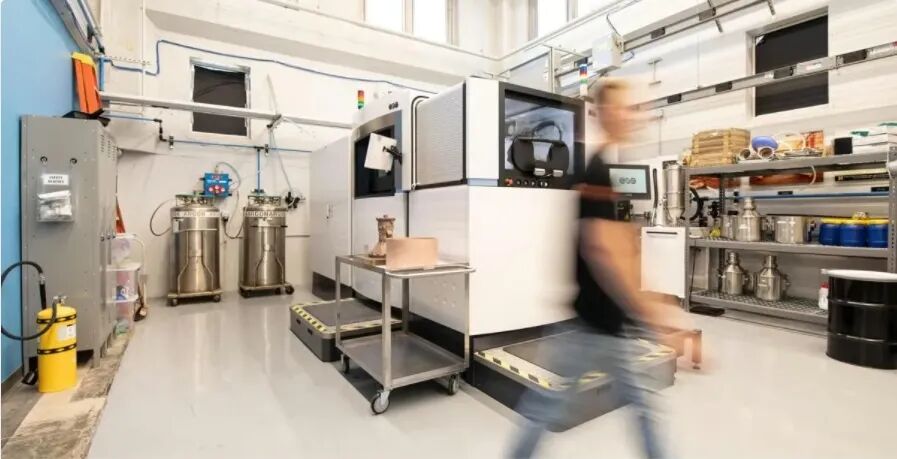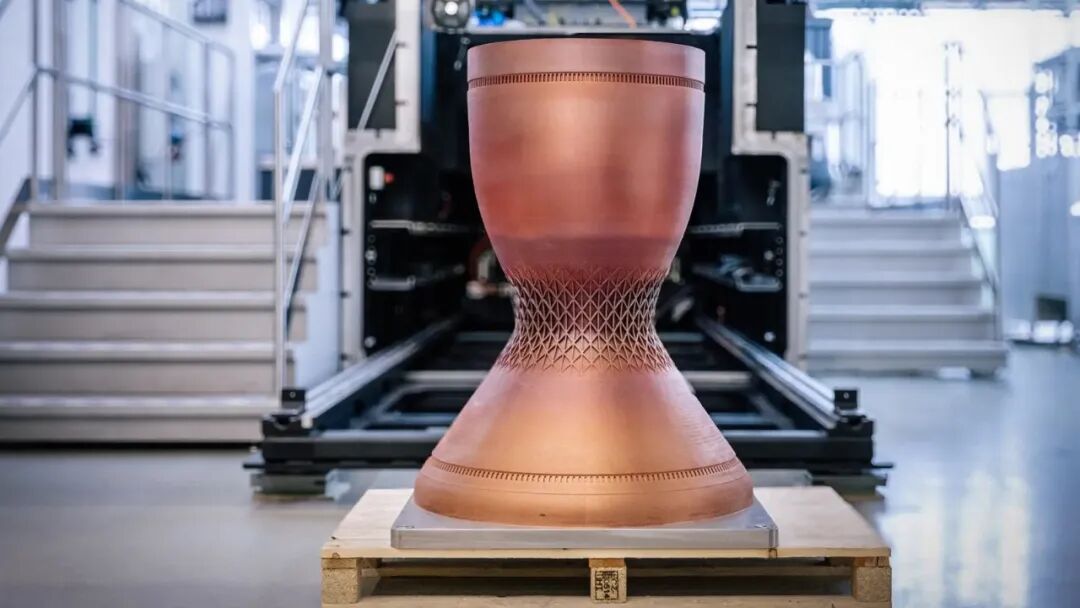EOS Finally Launches 1-Meter Size Metal 3D Printer! Equipped with 8 Units of 1-Kilowatt Lasers, AMCM New System
Introduction:In the field of LPBF metal 3D printing equipment, domestic manufacturers have already produced printers with a forming size of 2 meters, while leading foreign companies like EOS have been producing equipment with a forming size of up to 1 meter. It has been unclear whether this is due to a lack of market demand or technical limitations. Now, EOS has finally launched a metal machine with a forming size at the 1-meter level.
In October 2025, it was reported by Nanjixiong that AMCM, a large metal 3D printer manufacturer spun off from the German industrial 3D printer leader EOS, announced the launch of a "breakthrough technology in the field of large metal additive manufacturing." It is said that this new wind field airflow system, called "AirSword," enables ultra-large size laser powder bed fusion (LPBF) 3D printing without sacrificing print accuracy or part quality.

Laser Powder Bed Fusion (LPBF) and other "powder-laser" based additive manufacturing technologies face significant challenges in scaling up. AMCM points out that although LPBF technology is known for producing parts with high detail precision, its build area is difficult to exceed 1 meter by 1 meter. The core limiting factor is the poor airflow effect, which can lead to turbulence, smoke, and dust accumulation within the chamber, interfering with the laser path.
AirSword Airflow System: Breaking Through the Bottleneck of Scalable Printing
The AirSword system developed by AMCM overcomes the aforementioned limitations. In the company’s new M 8K printer and the planned M 10K and other large LPBF devices, AirSword can generate dynamic, multi-layer airflow that covers the entire printing space. The gas emitter at the center of the system divides the airflow into two opposing streams along the axis of the chamber, pushing smoke and spatter toward the exhaust openings on either side. This design prevents smoke from spreading within the chamber even during long printing processes, avoiding interference with the laser beam path.
Georg Fey, the manager of the Applications and Innovation Team at AMCM, stated: "We utilized extensive computational fluid dynamics simulations to design the AirSword system, optimizing the airflow patterns in large LPBF chambers. These simulations provided guidance for the design of the airflow nozzle outlets and the overall airflow dynamics scheme. This airflow system was manufactured using our M 4K printer, fully leveraging the design freedom of LPBF technology to create an efficient and custom-fit airflow solution."

The △AirSword system adopts a dynamic, multi-layered, and seamlessly interconnected airflow design to cover the entire printing area for debris removal (Source: AMCM).
Core Advantages and Supporting Technologies
One of the outstanding advantages of the AirSword system is its ability to continuously direct airflow to prevent the accumulation of smoke and dust, keeping the glass window and laser optical components clean. During long printing sessions, smoke and dust buildup often leads to a decline in printing accuracy.
According to AMCM, the M 8K printer is equipped with eight 1-kilowatt lasers, with a powder bed area of 0.7 square meters and a printing volume of 800×800×1200 cubic millimeters. The equipment is designed specifically for industrial-grade production efficiency, capable of handling up to 5 tons of powder while ensuring printing precision in the Z-axis direction. The upcoming M 10K printer will further expand the printing platform to a full size of 1000×1000 square millimeters.

In addition to AirSword, AMCM has also integrated advanced process control modules such as SmartFusion and EOState Exposure OT. It is reported that these modules help reduce the quality inspection phase after printing and enhance real-time monitoring capabilities.
AMCM emphasizes that by minimizing the active components in the airflow management subsystem, AirSword achieves reliable, low-maintenance operation—while retaining the core advantages of LPBF technology as the preferred solution for precision metal part manufacturing: high speed, high precision, and strong stability.

Martin Bullemer, Managing Director of AMCM, stated: "Designing systems of this size faces a number of challenges. The combination of AirSword with advanced process control technologies such as SmartFusion and EOState Exposure OT enhances quality assurance capabilities during the process and reduces the need for extensive post-printing inspections."
AMCM aims to achieve the goal of "manufacturing larger-sized metal parts" by launching the AirSword system and expanding equipment scale to the M 8K/M 10K level, without sacrificing surface quality and production efficiency.
【Copyright and Disclaimer】The above information is collected and organized by PlastMatch. The copyright belongs to the original author. This article is reprinted for the purpose of providing more information, and it does not imply that PlastMatch endorses the views expressed in the article or guarantees its accuracy. If there are any errors in the source attribution or if your legitimate rights have been infringed, please contact us, and we will promptly correct or remove the content. If other media, websites, or individuals use the aforementioned content, they must clearly indicate the original source and origin of the work and assume legal responsibility on their own.
Most Popular
-

At Least 44 Dead in Century-Old Fire! Questioning Hong Kong's Hong Fu Garden: Why Has the Path to Fire Resistance Taken 15 Years Without Progress?
-

Satellite chemical's profits surge! can the 26.6 billion yuan high-end new materials project meet expectations? a review of progress on four major projects
-

Key Players: The 10 Most Critical Publicly Listed Companies in Solid-State Battery Raw Materials
-

Estun Turns Profitable in 2025 Half-Year Report, Industrial Robot Shipments Rank First Among Domestic Brands
-

Avatr Files for IPO on HKEX, Plans to Complete Listing in Q2 2026






